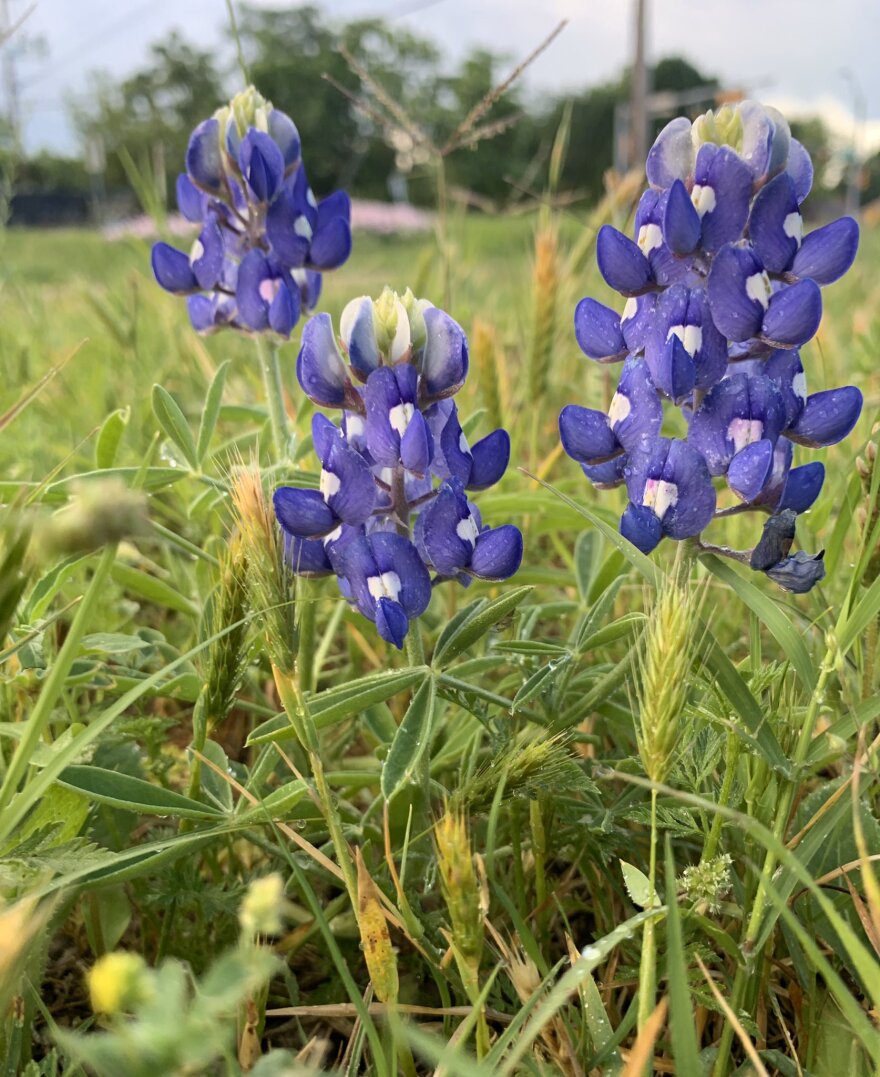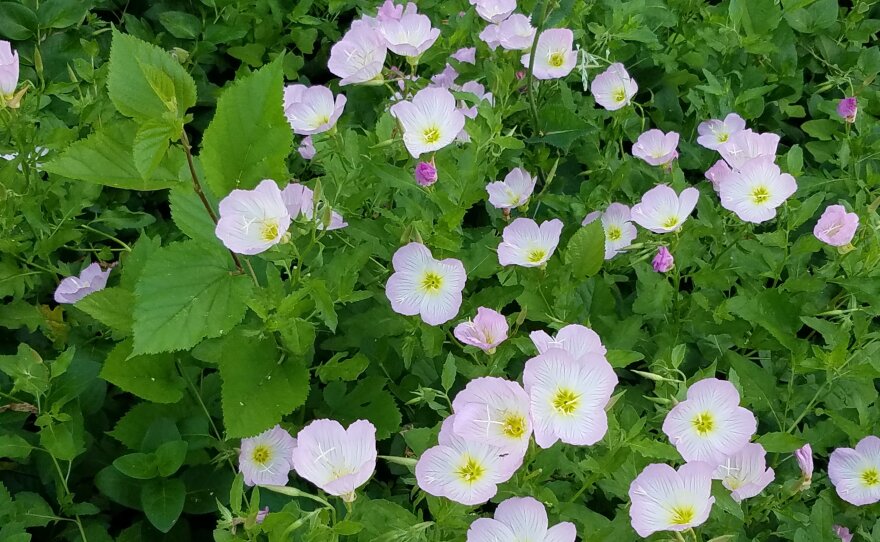When Katherine Leal Unmuth walks her dog along the Santa Fe Trail in Dallas, she pauses to admire the birds and wildflowers in bloom.
Seeing spring in action has helped her keep things in perspective during the coronavirus epidemic.
“It’s just appreciating beauty and appreciating life...being thankful for that,” she said.

The rising heat, swaths of blooming flowers, birds chirping and bees buzzing are familiar signs of spring in North Texas. But this spring, in the middle of the coronavirus pandemic, the vibrant season of growth and rebirth has taken on a new meaning.
For many North Texans, appreciating nature has become more than a leisurely pastime. Against a backdrop of rising unemployment and climbing daily coronavirus case counts, the blooming flowers have become a respite and a source of hope.
Unmuth, who works as a public relations manager at a Dallas law firm, also serves on the board of the Friends of Santa Fe Trail, and helps to promote and enhance the trail.
She takes pictures for the trail’s Instagram account, one of her most recent posts being a red and yellow-rimmed firewheel covered with dew.
View this post on Instagram Several #Texas #wildflowers spotted along the #trail - Indian Blanket, #bluebonnets and #pink evening #primrose #flowers #texaswildflowers @dallasparkrec #pinkeveningprimrose #springflowers #flowerstagram #flowerstagram #flowersofinstagram #santafetrail #Dallas #dallastexas #nature A post shared by Friends of Santa Fe Trail (@fosft) on Apr 28, 2020 at 8:05am PDT
Unmuth has many favorites.
“I’ve noticed right now there are a lot of pink evening primrose, purple prairie verbena, bluebonnets and wine cups,” she said.
Robin Koretsky, a legal assistant in Dallas, said the simple act of looking at or smelling a flower can be powerful.
“It brings you into basics, into nature,” she said.
She also finds a kind of camaraderie among the butterflies and bees as they enjoy the flowers alongside her.
“They’re doing their thing to touch down and experience and pick up the pollen or whatever attracts them to that particular flower,” she said. “So it can be helpful to get back to something that’s familiar, that’s calming.”

Koretsky recently went to a deserted Bluebonnet Drive to admire the Texas state flower in its springtime glory.
“Because there are so few cars on the road the day that I did a drive-by, it was really quiet,” she said. “I was able to roll down the window, pull over on the road, snap a few photos of the bluebonnets and then head on from there.”
Koretsky said she recognizes the irony of the situation - that quarantine has both hindered and intensified her love for Spring. Still, she’s thankful for the time to enjoy the flourishing world around her.
Coronavirus has also given nature an unexpected gift - time to grow mostly untouched by humans. And, for that, Koretsky is thankful.
“You’d see people doing their pictures and plopping down and squashing the bluebonnets, which everybody enjoys them and it is very nice to enjoy those photos to memorialize it,” she said. “But on the other hand, it has been nice that people may not be impinging on the wildflowers in the same way that they usually do.”
Daniel Cunningham is a Dallas-based horticulturist with Texas A&M AgriLife. He said the difficult times we live in make it even more important that we get out to admire the bluebonnets, paintbrushes and buttercups that are decorating fields and parks across North Texas.

“It is certainly tragic what our country is dealing with and the world as a whole and our region,” he said. “But for those of us who are at home or are working, I think just taking as much time as you can to spend outside...is a great way to recharge our batteries and just to break away for even just a moment just to enjoy nature.”
He said the next wildflower North Texans can look forward to? The sunflower, perhaps one of the most universal symbols of hope and strength, which will be in bloom throughout the summer.
Koretsky said this year’s spring is certainly different than last year’s, but the flowers blooming on cue - regardless of the uncertain world around them - brings back happy memories.
She said the sprouting shoots and unfurling petals serve as a gentle reminder.
Like the seasons, “this too shall pass,” she said.











